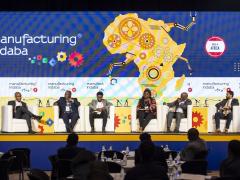Here is a summary of some of the must-read articles:
SA ICT sector navigates pandemic unscathed; skills gaps remain.

South African ICT employers and practitioners appear to have adapted well to the COVID-19 pandemic and associated lockdowns, with little to no negative impacts on working conditions or ICT skills demand and supply. However, significant digital skills gaps remain.
This emerged in the 2021 ICT Skills Survey carried out by Wits University’s Joburg Centre for Software Engineering (JCSE) in partnership with the Institute of Information Technology Professionals South Africa (IITPSA). The survey, the 11th since 2008 and the first since the start of the Covid-19 pandemic, assessed what impact the pandemic and lockdown have had on working conditions and skills supply and demand in South Africa. Report co-authors Adrian Schofield, production consultant at the IITPSA, and Professor Barry Dwolatzky, director of the JCSE, said in releasing their findings: “The surprising finding is that there are no surprising findings!
Listen to our podcast where Hans van de Groenendaal engages Adrian Schofield, production consultant at the IITPSA, Professor Barry Dwolatzky, and Tony Parry, CEO & Executive Director of the Institute of Information Technology Professionals South Africa (IITPSA) on the Gig economy and the controversial subject of quality in software design. Listen here
The cost of non-compliance
One of the biggest challenges for businesses today is keeping up to date with constantly changing regulations. This is largely due to the dynamic nature of the compliance landscape, according to Argantic director Richard Shaw. While compliance with regulations like the Protection of Personal Information Act of 2013 (POPIA) and General Data Protection Regulation (GDPR)) come with hefty price tags, the alternative is far more costly. According to a study by the Ponemon Institute and Globalscape, being compliant will cost less compared to business disruptions, loss of revenue and hefty fines. The cost of non-compliance is more than twice that of compliance costs.
The unexpected future - hybrid working
It was the year that finally changed global business gear - 2020. The year when companies were forced into digital workspaces and employees were figuring out how to optimise their productivity from home. It was a time when most companies adopted remote working because they had to. It was only for now, wasn’t it? Everybody would soon be back in the office, right. Right?
Wrong. Forrester’s recently revealed that only 30% of companies are likely to return to the full office model once the pandemic has eased. That’s 70% of organisations recognising the value of the work-from-anywhere employee – people empowered by technology to deliver on productivity without needing an office, or a manager looming over their shoulder. The same research found that companies that adopt a more flexible, hybrid model to work will very likely see measurable business benefits that include employee engagement, retention and recruitment.
This article is by Colin Thornton, who from the start-up “Dial a nerd” became chief commercial officer at Turrito
Connected cars, autonomous and electric driving, shared services
The future of mobility is unthinkable without intensive networking and data-based processes. This was a key insight coming from the world’s largest motor-show, IAA Mobility, in Germany recently.
Consistently advancing — this short formula can accurately describe the expectation of the automotive industry. As one of the most important industries in this country, it has always been the subject of extensive future investment. Due to digital transformation, there is a particular focus of activities on the technology trends for electric mobility, connected cars, shared services and autonomous driving. In addition to the need for suitable operating systems that connect vehicles to the
cloud, development is characterised by a general modernisation of the IT landscape in the automotive sector. This raises the question of which technologies and partners manufacturers should specifically target and which technology options they should ideally secure in the form of an in-house development of intellectual property.
This article is by Thomas Braunmiller, Business Value Director Automotive at ORACLE
How to minimise the number and size of output capacitors in power supply designs
A power supply’s output capacitors, which are typically ceramic capacitors with values between 100 nF and 100 µF, cost money, take up space, and, in the case of delivery bottle necks, can be difficult to obtain. Thus, the question of how the number and size of output capacitors can be minimised arises time and time again.
The first mission to the Trojan Asteroids
Time capsules from the birth of our solar system more than 4 billion years ago, the swarms of Trojan asteroids associated with Jupiter are thought to be remnants of the primordial material that formed the outer planets. The Trojans orbit the Sun in two loose groups, with one group leading ahead of Jupiter in its path, the other trailing behind. Clustered around the two Lagrange points equidistant from the Sun and Jupiter, the Trojans are stabilised by the Sun and its largest planet in a gravitational balancing act. These primitive bodies hold vital clues to deciphering the history of the solar system. Lucy will be the first space mission to study the Trojans.














